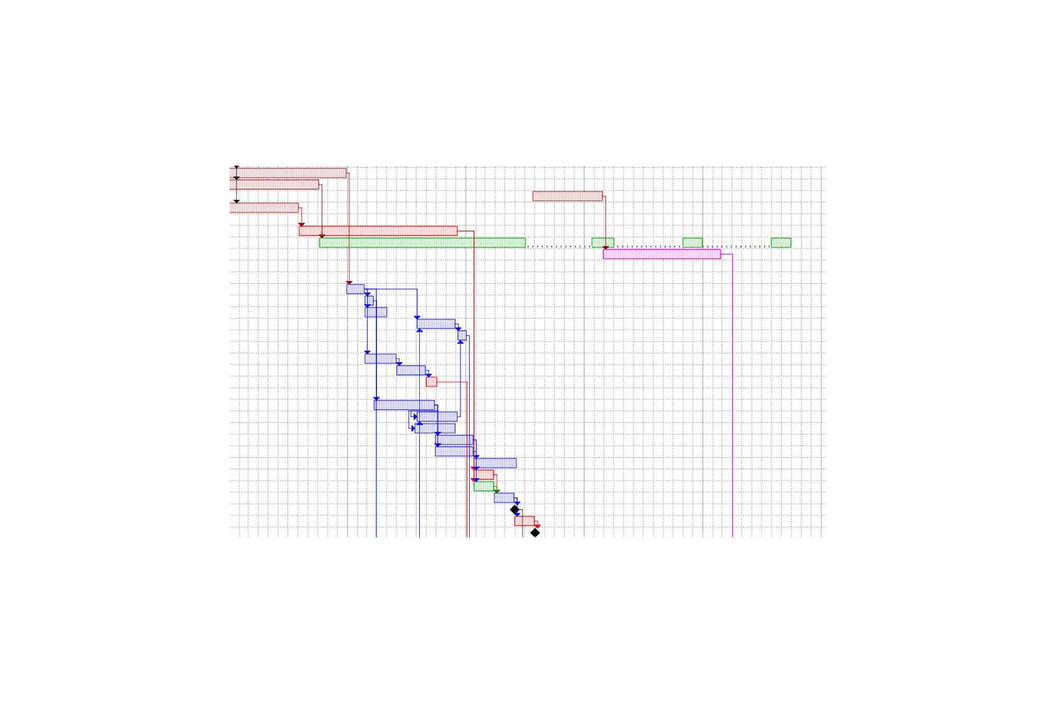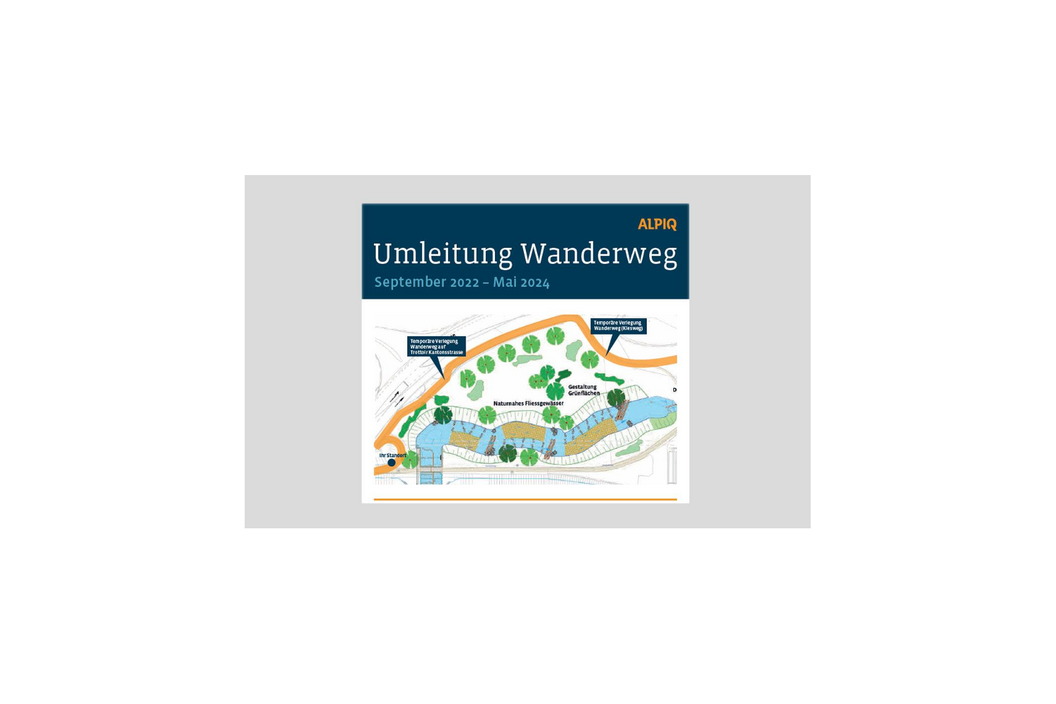
Who is Alpiq Hydro Aare AG?
Alpiq Hydro Aare AG is a wholly owned subsidiary of Alpiq. The company owns and operates the three run-of-river power plants Flumenthal, Ruppoldingen and Gösgen on the River Aare in the canton of Solothurn.
The existing fish ladder at the Flumenthal power plant, which was built 50 years ago, does not meet the current standards for fish migration. Alpiq Hydro Aare AG replaced the fish ladder with a 480-metre bypass watercourse. The construction work will be completed by the end of October 2024, and the fish pass will be inaugurated in spring 2025.
The Flumenthal hydropower plant with its three horizontal bulb turbines was commissioned in 1970, and at full capacity, it processes roughly 386 cubic metres of water per second. The three machines have an output of 25 MW, generating on average some 146 million kWh of electricity per year.
Following the construction of the power plant, the fish were able to overcome the difference in elevation between the headwater and tailwater using what is known as a basin pass. Since it no longer meets modern standards for fish migration, Alpiq Hydro Aare AG will implement a completely new fish pass in the form of a bypass watercourse, scheduled for the end of October 2024.
From the end of October 2024, fish and other aquatic life will be able to overcome the approximately 8-metre difference in elevation between the headwater and tailwater via a largely near-natural watercourse. The watercourse consists of three different stretches: a natural watercourse with rapids, a longer ramp with boulders, horizontal slabs and individual basins in the form of a riffle channel, and a basin-like concrete vertical slot pass at the mouth. Depending on the actual water level in the Aare, an average of 3 to 5 cubic metres of water flow through the fish pass every second.
The intake structure is located in the municipality of Riedholz directly below the bridge on which the cantonal road passes over the Aare. The structure regulates the water flow depending on the level of the Aare in the headwater.
The near-natural watercourse between the intake structure and the power plant is designed to accommodate higher flow rates than the subsequent riffle channel and, in addition to aquatic passability, it provides a diverse habitat for aquatic fauna.
The riffle channel runs from the power plant access road to the tailwater. In this channel, the fish overcome a large part of the difference in elevation between the headwater and tailwater. To ensure that the fish pass functions at varying water levels in the Aare, the lowest stretch by the mouth is designed as a vertical slot pass. The connection to the tailwater will be located directly below the turbine outlet, parallel to the flow. To achieve this, the embankment wall below the mouth will be removed (“riverbed connection”) and replaced by a new concrete wall. In order to enhance the leading flow, an additional outflow from the headwater will be led via a pipeline to a weir turbine and discharged into the mouth basin.
A collecting channel is connected directly to the power plant. This creates two additional entrances to the fish pass on both sides of the centre pier of the weir in the tailwater.

During the construction period for the new fish pass, the hiking trail on the north bank of the power plant has to be rerouted onto the pavement of the cantonal road (see photo of information board). The hiking trail on the south bank along the side of the golf course can continue to be used without restrictions.
The public parking spaces on the forecourt of the power plant will be eliminated since the new fish pass will considerably reduce the size of the forecourt. Alternative parking spaces are available on the southern bank near the bridge over the Aare.

In total, Alpiq Hydro Aare AG is investing approximately 20 million Swiss francs in the construction of the fish pass. However, the federal government reimburses the costs from the grid surcharge fund, which means that the upgrading of the fish pass at the Flumenthal power plant will be funded by all electricity consumers via the electricity price.
During the fish migration inspection in 2005, the performance of the fish ladder, which was commissioned in 1970, was rated as inadequate. The negative assessment was primarily based on the very low number of small and weaker fish species that were found during inspections, indicating that the fish pass had a selective effect.
Consequently, in 2016, the Federal Office for the Environment (FOEN) ruled:
Naturally, this possibility was examined and compared with options that foresee the construction of a new fish pass. We examined the following four options:
1. Optimisation of the existing fish ladder
2. Construction of a new technical fish pass (vertical slot pass using concrete elements)
3. Construction of a new short, near-natural fish pass
4. Construction of a new near-natural bypass watercourse, incorporating the creation of new habitats and spawning grounds in addition to the fish pass
Due to its narrow channel, the old fish ladder cannot be upgraded to fulfil the current standards for fish migration. This would require more space for larger basins with a lower gradient per step.
In consultation with the technical and approval authorities of the cantons of Solothurn and Berne, option 4 was determined to be the preferred solution. This was due to the significantly greater positive impact on the adjacent watercourse section of the Aare, on the terrestrial habitat and on the landscape. The pre-project was coordinated with the cantonal authorities. Subsequently, Alpiq submitted it to the Federal Office for the Environment in accordance with the prescribed procedure.
Unfortunately, none of the public car parking spaces on the forecourt of the power plant will be available, since the new near-natural basin fish pass will take up most of the forecourt. Alternative car parking spaces are available on the southern bank near the bridge over the River Aare.
No. The new watercourse is designated exclusively for the endangered fauna in the Aare. These timid animals are driven away simply when people approach the open water; the new watercourse is intended to be a natural and protected habitat.